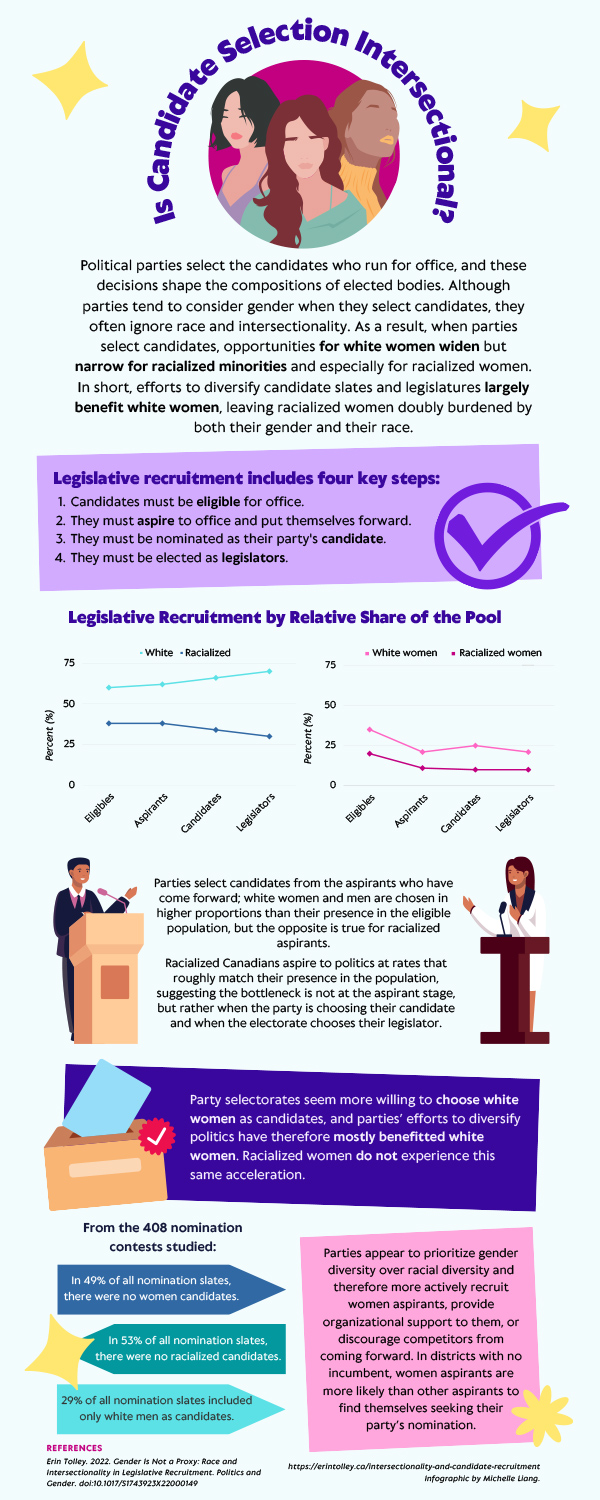Election to office is shaped by a series of decisions made by prospective candidates, parties, and voters. These choices determine who emerges and is ultimately selected. Each decision point either expands or limits the possibilities for more diverse representation. Studies of women candidates have established an important theoretical and empirical basis for understanding legislative recruitment. This study asks how these patterns differ when race and intersectionality are integrated into the analyses. Focusing on more than 800 political aspirants in Canada, I show that legislative recruitment varies by race, gender, and their intersections. Whereas white and racialized women aspire to political office at roughly the same rates, their experiences diverge at the point of party selection. Political parties’ efforts to diversify politics have mostly benefitted white women, and a greater emphasis on the electoral trajectories of racialized women and men is needed.
Citation:
Erin Tolley. 2022. “Gender Is Not a Proxy: Race and Intersectionality in Candidate Recruitment.” FirstView at Politics & Gender. doi:10.1017/S1743923X22000149
